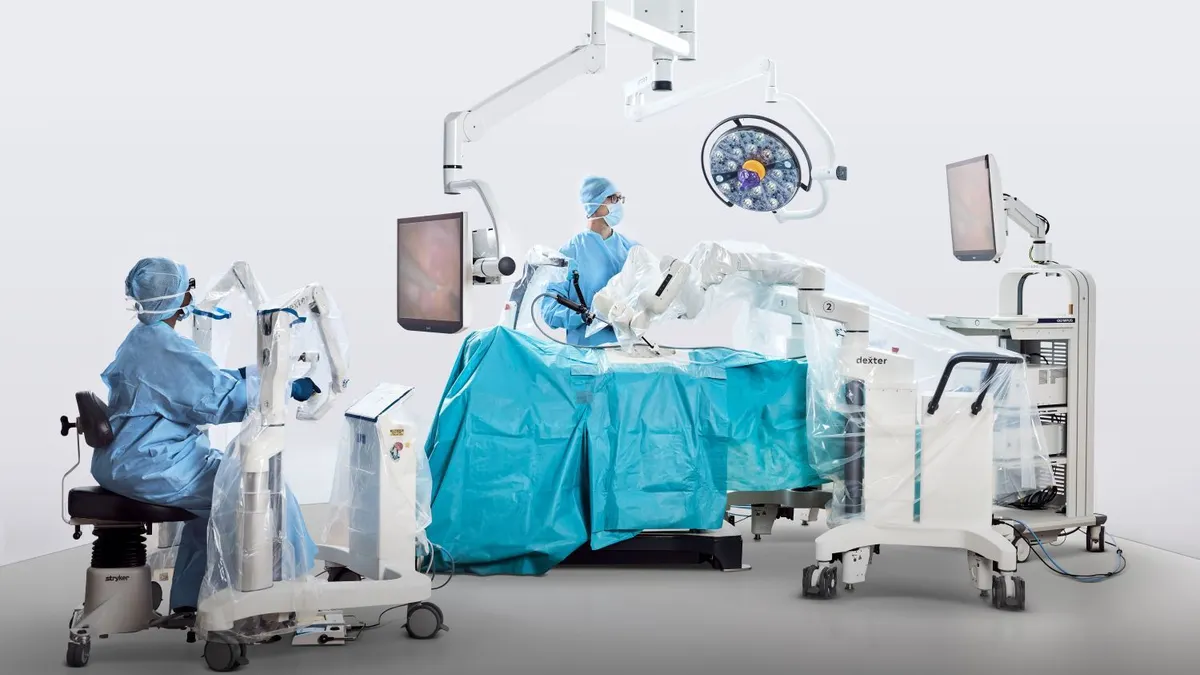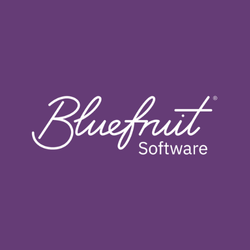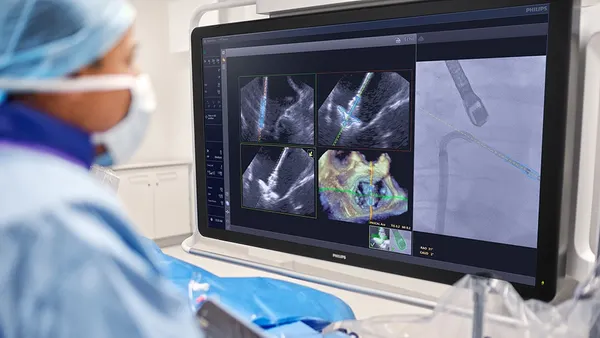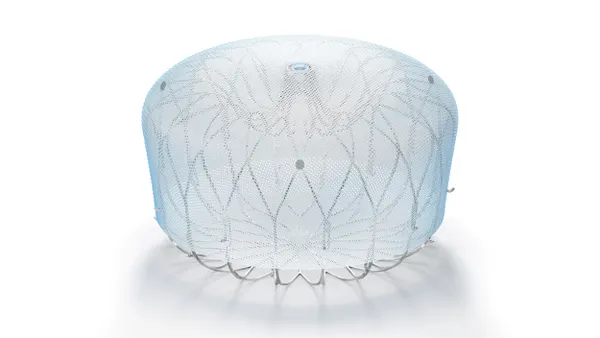Dive Brief:
- Distalmotion said this week that it has raised $150 million to accelerate commercial adoption of its soft-tissue robotic system in the U.S.
- The Swiss company has received three authorizations for its Dexter robot in the U.S., clearing it to promote the device for use in gallbladder, hysterectomy and hernia repair procedures.
- Distalmotion is targeting the fast-growing ambulatory surgery center sector, where its relatively small, mobile robotics platform could have an advantage over Intuitive’s market-leading devices.
Dive Insight:
Distalmotion has designed Dexter to integrate into existing surgical environments without the need for dedicated infrastructure. The robotic platform’s open architecture allows surgeons to use their preferred visualization systems and laparoscopic electrosurgical generators.
In a paper published in the Journal of Robotic Surgery in September, physicians contrasted the features of Dexter to existing platforms that require dedicated operating room space, institutional resources for surgeon training and substantial infrastructure. The physicians said those requirements are barriers to the use of robots in ASCs, limiting uptake at sites that could benefit from minimally invasive platforms.
Distalmotion now has $150 million to try to show that Dexter is a better fit for ASCs. CEO Greg Roche said in a statement that “ASCs represent a tremendous opportunity for Dexter” as Distalmotion enters the next phase of its U.S. commercialization plan.
The plan will put Distalmotion up against Intuitive, the soft-tissue robotics leader. On an earnings call last month, Intuitive executives discussed the trend for some hospitals that buy the latest da Vinci 5 device to redeploy older Xi robots in ASCs.
Intuitive CFO Jamie Samath told analysts the original capital cost of the robots is a bigger constraint on the installation of new robots in ASCs than Medicare coverage and commercial rates. Some Intuitive systems in ASCs are leased, a payment model that reduces the upfront cost.
Xi robots make up most of the Intuitive systems at ASCs, but some sites use the cheaper X platform, the CFO said. While the ASC installed base is relatively small, Samath said procedure growth at the sites is “quite a bit accretive to what we see in terms of overall U.S. procedure growth.” The growth is driving interest in the market.
“ASCs are going to be an area of increased interest and focus for us,” Samath said. “Obviously, we're going to look carefully at the economics. It's fair to say that as we stand today, the reimbursement in an ASC is a fraction of the reimbursement in a [hospital outpatient department]. That creates a barrier, particularly for ASCs owned by [integrated delivery networks].”












